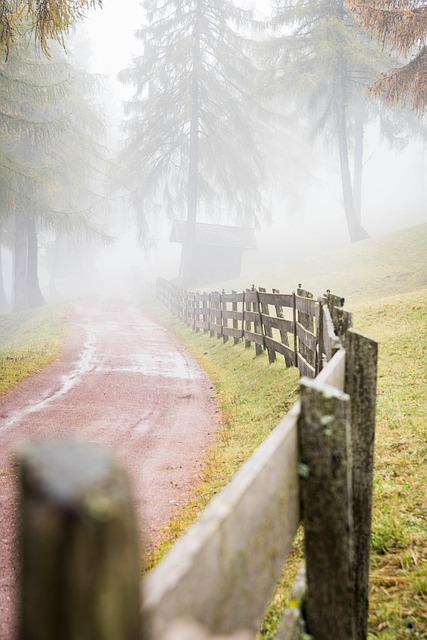Coastal areas present unique challenges when it comes to fencing due to exposure to harsh weather conditions, salty air, and moisture. Durable wooden fencing offers an attractive and sustainable solution for these environments. This article explores the benefits of long-lasting wood fencing, guiding readers through selecting the ideal wood types, installation methods suited for coastlines, and maintenance tips to ensure longevity. By understanding these key aspects, homeowners can enhance their outdoor spaces with beautiful and resilient fences.
- Understanding Coastal Fencing Challenges
- Advantages of Durable Wooden Fencing
- Choosing the Right Wood Species
- Installation Techniques for Coastlines
- Maintenance Tips for Longevity
Understanding Coastal Fencing Challenges
Coastal areas present unique challenges when it comes to fencing due to their harsh, often unpredictable environments. Strong winds, salty air, and regular exposure to moisture can significantly impact the longevity of traditional fence materials. Wood, while aesthetically pleasing, has traditionally been susceptible to rot, warping, and insect infestations in these settings. Understanding these challenges is the first step towards selecting a durable solution that can withstand coastal conditions without compromising aesthetics or functionality.
The key to successful coastal fencing lies in choosing materials and construction methods that offer superior resistance to moisture, pests, and extreme weather events. This often involves opting for treated or naturally rot-resistant woods, such as cedar or redwood, which have built-in defenses against the coastal environment. Additionally, proper sealing, regular maintenance, and innovative design techniques play a crucial role in ensuring that the fence not only looks good but also stands the test of time in these challenging conditions.
Advantages of Durable Wooden Fencing
Durable wooden fencing offers numerous advantages for coastal areas, where traditional materials might struggle against harsh weather conditions and salty air. Firstly, wood’s natural resistance to corrosion sets it apart from metal alternatives, ensuring longer longevity without the need for frequent replacements or repairs. This is especially beneficial in coastal regions exposed to constant wind, rain, and salt spray.
Additionally, wooden fences provide excellent aesthetic appeal with their warm, natural tones and textures, seamlessly blending with surrounding landscapes. They offer a sense of privacy and security while allowing light and air to circulate, making them ideal for homes or businesses seeking both functionality and visual appeal.
Choosing the Right Wood Species
When selecting wood for durable coastal fencing, understanding the characteristics of different species is key. Not all woods are created equal when it comes to resisting salt spray and moisture. Some varieties, like cedar and redwood, have natural oils that act as a barrier against water absorption and decay, making them excellent choices. These woods also have a higher resistance to insects and UV rays, ensuring longevity in harsh coastal conditions.
Additionally, exotic hardwoods such as Ipe or Tigerwood offer exceptional durability and beauty. They are dense and naturally resistant to rot, making them ideal for areas prone to high humidity and salt content in the air. Considering the local climate and environmental factors is crucial in choosing a wood species that will stand the test of time, maintaining its integrity and aesthetic appeal even after years of exposure to coastal elements.
Installation Techniques for Coastlines
When installing wooden fencing in coastal areas, special consideration must be given to the unique challenges posed by salt air, strong winds, and regular exposure to moisture. One effective technique involves using a robust, water-resistant fence post material like treated timber or steel, which can withstand these harsh conditions. The posts should be firmly anchored into the ground using concrete foundations, ensuring stability against high tides and powerful storms.
Another crucial step is selecting an appropriate fencing style that offers both visual appeal and structural integrity. Vertically installed pickets or panels can effectively block out strong winds, while diagonal bracing can enhance overall strength. Regular cleaning and sealing of the wood with UV-resistant, water-repellent coatings are essential maintenance practices to preserve the fence’s durability over time.
Maintenance Tips for Longevity
Regular cleaning and inspection are essential to ensure your wooden fence remains in top condition, especially in coastal environments where salt air can accelerate wood decay. Use a soft-bristled brush or cloth to gently remove any dirt, salt residue, or algae buildup. Avoid harsh chemicals, as they may strip the finish or even damage the wood. Check for loose nails, screws, or boards, replacing them promptly to prevent water seepage and rot.
Apply a fresh coat of water-repellent sealer or stain every one to two years to protect against moisture and UV radiation. This simple maintenance routine will help extend the life of your durable wooden fence, ensuring it continues to provide both privacy and aesthetic appeal for years to come.
